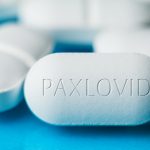
Americans with COVID-19 have been taking Paxlovid since it was approved under emergency use in late 2021. Today, the U.S. Food and Drug Administration granted full approval to the drug. This approval will allow drugmaker Pfizer to sell the medication at market rate once government supplies are used up. Paxlovid is the fourth antiviral drug and first pill approved by the FDA to treat COVID. It’s meant to keep at-risk adults from progressing to severe COVID symptoms, including hospitalization and death. “Today’s approval demonstrates that Paxlovid has met the agency’s rigorous standards for safety and effectiveness, and that it remains an important treatment option for people at high risk for progression to severe COVID-19, including those with prior immunity,” Dr. Patrizia Cavazzoni, director of the FDA’s Center for Drug Evaluation and Research, said in an agency news release. The approval was made using results from the randomized EPIC-HR clinical trial. That trial studied adults who had a lab-confirmed COVID infection and symptoms but were not hospitalized. They each had a risk factor for severe disease, such as obesity or diabetes, or were 60 years and older. These patients had not received a COVID vaccine or been infected before. The study found that Paxlovid reduced odds of hospitalization or death by 86% compared to those given a placebo within five days of symptom onset. The patients… read on > read on >


















